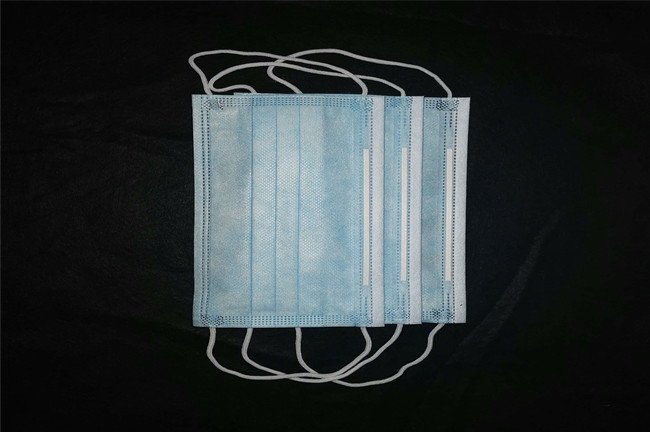Why are medical staff wearing masks also infected?
This is because severe pneumonia or general anesthesia requires intubation, and tracheal intubation will produce aerosols and the infectivity of aerosols is the strongest, which can reach several times or even dozens of times of droplets.
Coronavirus is usually spread by droplets, and many patients who would not have been infected with others would be contagious when aerosols are generated during intubation. This is one of the reasons why medical staff accounted for 1/3 of the total number of cases during SARS. Therefore, medical staff working on the frontline of the epidemic must wear isolation gowns.

The melt-blown fabric felt disposable mask
The melt-blown fabric mask is a multi-layer composite structure. The N95/KN95 mask is composed of the innermost and outermost non-woven fabric layer, the middle electrostatic layer, and the meltblown non-woven fabric layer. The medical-surgical mask is composed of the non-woven fabric layer and the meltblown nonwoven fabric layer. Cloth layer. In addition to supporting the mask, the non-woven fabric layer also serves as a part of the screen, and particles with a large particle size will be blocked by them. Meltblown non-woven fabric has a superfine fiber structure, has good filterability, and can intercept medium-sized particles. The electrostatic layer plays the role of electrostatic adsorption, especially small particles are light and will be adsorbed.
The larger the particles, the better the filtering effect, the smaller the particles, the better the adsorption effect, and the medium-sized particles are the most likely to slip through the net. According to a large number of experiments, the particle size ranges from 0.2 to 0.8 microns. Therefore, in GB2626-2006 "Respiratory Protective Equipment-Self-priming Filter Type Anti-Particulate Respirator", the detection of leakage requires that the particle size is between 0.02 microns and 2 microns, and the median is 0.3 and 0.6 microns.
There are many kinds of masks on the market, what kind of mask should I choose?
Common masks include the following types: ordinary cotton masks, disposable masks (such as medical-surgical masks, ordinary medical masks), and medical protective masks (N95/KN95 masks).
Among them, medical protective masks (N95/KN95 masks) and medical-surgical masks are medical products that have obtained national regulatory management after SARS in 2003 and have the function of blocking the passage of liquid and droplet particles. If worn correctly, it can effectively prevent diseases spread by droplets and is our first choice for masks. They are usually made of multiple layers of non-woven fabrics.
Medical protective masks should comply with China's GB 19083-2010 mandatory standards, with a filtration efficiency of ≥95% (using non-oily particles for testing). It is required to pass the synthetic blood penetration test (to prevent body fluid from splashing), and it is required to meet the microbiological indicators.
The N95 mask is one of the nine anti-particulate masks certified by NIOSH (National Institute of Occupational Safety and Health). "N" means non-oily particles (the fume produced by cooking is oily particles, while the droplets produced by people talking or coughing are not oily).
The above three standard filtration efficiency test methods are the same, so the filtration efficiency levels are the same.
Viruses are the smallest particles among the particles we can come into contact with daily. PM2.5, which we are familiar with, refers to particles with a particle size of 2.5 microns and below, and the particle size of viruses ranges from 0.02 to 0.3 microns. Is the virus so small, isn't it very dangerous?
This is a common misunderstanding. It is thought that a mask is a sieve, particles smaller than the sieve hole can pass through, and particles larger than the sieve hole are blocked outside. In fact, N95 masks can effectively block large particles and the smallest particles.